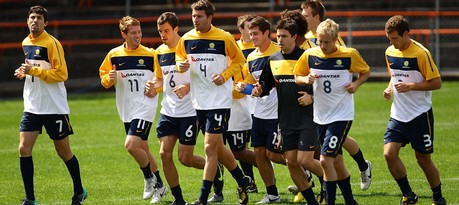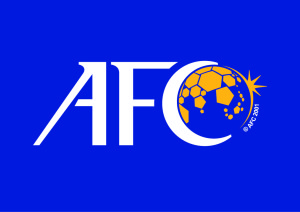By Samindra Kunti
February 2 – Earlier this month the Olympic dream of the Olyroos, Australia’s U23 team, faded in Doha as they made a backdoor exit from the Asian Cup, collecting a meagre 2-0 victory against Vietnam in group D alongside the UAE and Jordan. Neither the elimination nor the absence of European-based players caused disgruntlement, only the manner of capitulation did.
“After the Socceroos’s success at the 2015 Asian Cup, the big disappointment stemmed from the fact that the Olyroos – the team and the staff – didn’t manage to completely introduce the vision and style of play of the Socceroos in their group,” said the technical director of Football Federation Australia [FFA] Eric Abrams, who attended Australia’s three group matches in Qatar.
“Our head coach Ange Postecoglou wants proactive football, high pressing with a good build-up from the back,” explained Abrams. “The intention to press high up existed at times, but it didn’t always come off and the physical inferior quality of our players was invoked a little too often as an excuse not to do it, but that’s not the Australian mentality, i.e. the press received the result quite negatively and there were a lot of emotional reactions in the sense of – What are we doing? Is this the new generation of Socceroos?”
Abrams was appointed the FFA’s new technical director to oversee elite youth player development and coach education strategies in Australia after the 2014 Brazil World Cup, wherein the Socceroos’s valiant performance in the tournament’s proclaimed group of death won much acclaim. Abrams enjoyed a modest playing career with KFC Winterslag in the Belgian top-flight before heading KRC Genk’s youth academy in the late 90’s and coaching Belgium’s U15 and U17 teams from 2001 to 2013. He also managed Belgium’s top sports school from 2011 to 2013. Abrams nurtured and honed Belgian’s golden generation in their formative years, including Manchester City’s Kevin De Bruyne and Chelsea’s Thibaut Courtois.
“My main job is to convince the leading personnel in the FFA and the States to adopt the same vision and pass it on to all their coaches in the football landscape wherein they operate,” said Abrams. “In the role of technical director it’s very important to benchmark your ideas and projects against the football landscape and the several different States: where are you right now and what is feasible for you within this project or process and how are we going to do together?”
At the FFA Abrams succeeded the long-serving Han Berger, thus ending the Dutch prevalence in the organization’s higher echelons. Guis Hiddink, who guided Australia to the knockout phase of the 2006 Germany World Cup, Rob Haan and Pim Verbeeck presided as coaches over an orange-tinted era in Australian football. Together with their back room staff they implemented a Dutch football philosophy.
“My predecessors emphasised technical and footballing abilities a lot, good passing,” said Abrams. “The only problem in the Dutch curriculum, developed over a number of years and whereon they based their philosophy, is that there is never any mention of turnovers and defending. They assume that they will always have possession and be dominant.”
“It’s very important to not forget what the basic ingredients of Australia’s sports culture are when you introduce a new vision and philosophy,” stressed Abrams. “We are in a phase where we are trying to find a right balance between proper coaching of players and maintaining sight of the values of Australian sports.”
After his appointment Abrams embarked on a 100-day fact-finding mission in Australia to immerse himself in the local game, discover local structures and map out possible frailties and deficiencies. He visited Australia’s nine States and Territories and travelled to remote areas in both Tasmania and Northern Territory. Abrams encountered a panoply of problems.
“In the current model, virtually every state is approached in the same way at technical level,” observed Abrams. “In New South Wales, where you have 220,000 registered players, there is a fulltime Centre of Excellence for 18 players [for each age group] and the same goes for Tasmania, where you only have 13,000 registered players. I can ascertain that in some States we don’t unearth all our talent, while in others we have players in our programmes who are good, but not per se talented.”
“A second major lacuna is that none of the nine professional Australian clubs, and one from New Zealand, [in the A-league] have a youth academy,” said Abrams. “There is only a senior team and a U20 team, which also serves as a reserve team. Below that age group, there are no categories in the structure. We are going to work at it this year and by 2017 the target is that each professional club has a semiprofessional or professional youth academy.”
Sydney FC, Western Sydney Wanderers, Central Coast Mariners, Perth Glory and the Newcastle Jets are all setting up youth academies, but the development of the grassroots level, both elite youth player development and coach education, remains the achilleas heel of Australian football, blighting any further progress and professionalization.
A player’s path to the domestic game’s elite is mired in difficulties: the FFA and the States tolerate a post-formation gap as they only provide quality programs until the U15-16 age groups for a limited pool of players, who subsequently encounter either a no-man’s-land or the National Premier League, Australia’s equivalent of The Championship and a distinctly unattractive proposition. At coach education level accessibility and cost is a threshold.
“The approach for talent development and coach development is similar,” said Abrams. “If you want to develop better players, you need better coaches.”
“The coach education is too centralised,” elaborated Adams. “The course [at C-level] was instructed in a 10-day crash form. The candidates had to fly in, book hotels, take 10 days off work and fork out money. They returned home and they picked up their old habits if they weren’t mentored and monitored, So, the course had little effect.”
“It’s the intention to decentralize the professional programs we have in the different States so that we can reach more players and [have] FFA-appointed coaches assist them twice a week, let them return to their clubs for two training sessions a week and a match in the weekend,” said Abrams.
Following his rigorous exploration of the Australian football landscape Abrams made another five recommendations, apart from the aforementioned youth player and coach education sensitivities, to his board in a confidential report: a more holistic national football curriculum, a revision of designated league and competition structures, widespread talent identification programs at domestic and national level, systemic integration of schools and the need for better ( and accessible) facilities.
In many ways Abrams is extracting key elements from the Belgian model – individual player development, coach education and general harmonization – and transplanting them, where applicable, to Australia. In the Asian Football Confederation Belgian technical directors have become prized assets with Saudi Arabia and Singapore employing Jan Van Winckel and Michel Sablon respectively, almost as if the idiosyncratic architects of FIFA’s number-one-newbies can guarantee a fast-tracked ascension to the top of world football.
“There is proof that the Belgian method paid off, that’s the reason why Sablon, Van Winckel and myself were appointed at our respective FA’s,” said Abrams. “Everyone in Singapore, Sablon foremost, must realize that within 20 years they will not be among the world’s best. For Saudi Arabia, having lived in that culture myself [coach of Al-Ahli U15 in the 2013/14 season], it’s a huge challenge for Van Winckel: long-term thinking isn’t a part of Arabian sports and the acquisition of quality staff is incontestably equated with the delivery of immediate results. I have a feeling one realizes in Australia that it’s a long-haul process and that you can’t build a football power in a jiffy.”
Last May the FFA delivered their vision for the next 20 years with ‘The Whole Football Plan,’ another textbook grand plan – so ubiquitous in contemporary football – with headline-grabbing aspirations and lofty projections. By 2035 the FFA envisage a 15-million strong football community with a boom in elite junior players and elite coaches, reduced fees for football education, nationwide school competitions, and the government must facilitate this. The document oscillates between a wish list and a strategic plan, but underlines the FFA’s desire for long-term development.
“It would give great satisfaction if throughout Australia the entire football landscape would accept the vision and philosophy that we are preaching – that parents stand behind the structure and vision and support their children, that coaches adhere to it,” confirmed Abrams.
The Olyroos’s elimination in Qatar kick-started much scrutiny and self-reflection within Australian football about its possible future destination, but adjustments to Abrams’s vision were scarcely contemplated. Rather, Abrams believes that the Olyroos’s ill fate points towards a broader evolution in the global game – that one-dimensional players, the likes of Tony Popovic and Brett Emerton, will soon be anachronism in a world of all-rounders in every field position.
“My Dutch predecessors developed a training model with the different facets of warm-up, passing, a game form and a match form,” said Abrams. “In all the training programs I have attended live, I observed that that [model] was adhered to very rigidly, perhaps too rigidly. There is little room for creativity, too much is based on passing, but what I miss in particular in the training programs is the lack of real game simulation, when a player must be creative, when he is allowed to take decisions and when he can make mistakes. Too many coaches think they educate players and give too little responsibility to a player and still underestimate the player’s intelligence and football knowledge to solve problems in a match.”
“Our training is a bit ‘manufactured’, it’s something that has come to the fore after the elimination of the Olyroos,” continued Abrams. “A number of people said ‘We feel that we are making robots.’ That is something I want to go against. Australia have few players who make decisions. We have players with defensive qualities, players with passing qualities, but no real decision-makers. We are moving towards football in which each and every player is going to be a decision-maker, not just an offensive midfielder or a playmaker. Player profiles will evolve into [for example] a central defender, who not only defends and recovers possession to pass, but who also needs to provide attacking impetus to the team. You can see this with attackers, at international level, they are expected to pressure high up the pitch – they are the first defenders.”
If Abrams and the FFA can produce those players, a generation of super athletes, Australia might well become a football powerhouse.
Contact the writer of this story at moc.l1745054940labto1745054940ofdlr1745054940owedi1745054940sni@i1745054940tnuk.1745054940ardni1745054940mas1745054940


